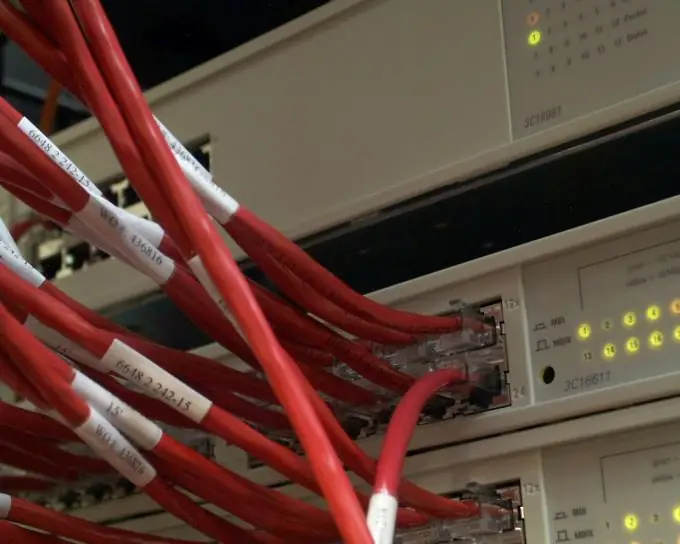- Author Lauren Nevill [email protected].
- Public 2023-12-16 18:48.
- Last modified 2025-01-23 15:15.
The number of laptops, netbooks and computers is growing steadily. This leads to the fact that all kinds of local networks are increasingly being created. It is far from always possible to create and configure a local network one time so that later you do not have to configure or build it up. Quite often, situations arise when it is simply necessary to expand the local network by supplementing it with new computers or other devices. In such cases, routers, routers or switches come to the rescue.

Necessary
- network cables
- router
- switch
- router
Instructions
Step 1
It is important to understand that expanding a local area network does not require a huge network knowledge base. In certain cases, distributing a local network is even easier than building a new one from scratch. If you already have a configured working local area network created using a switch, router or router, and these devices have a number of free ports sufficient to connect new devices, then connect the required computers or laptops to them. To do this, use network cables.
Step 2
If you need to connect a large number of new equipment, then purchase an additional switch, router or router. Connect it to any non-isolated network equipment with a network cable. If we are talking about a device with custom ports, then it is better to use them. Now connect the laptops, computers or printers you want to use with the new network hardware.
Step 3
Do not connect a network device with multiple switches at the same time. This can create a ring network that will not work properly.
Step 4
To ensure stable operation of the shared LAN, enter the IP address values for the new devices. If you used a router or router to connect, turn on the DHCP function in them. It will automatically issue correct IP addresses to devices connected to them. In this case, you need to go to the properties of the TCP / IP protocol, which is located in the local network settings, and activate the items "get an IP address automatically" and "get a DNS server automatically".
Step 5
If you used a switch to connect new equipment, then it is better to enter the required IP addresses yourself. To do this, repeat the steps described in the previous step to go to the network settings and enter the required IP address. It should differ from the addresses of the rest of the equipment only in the last segment.






